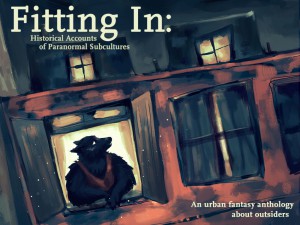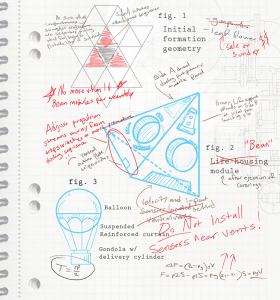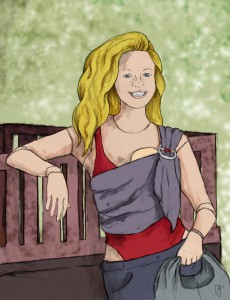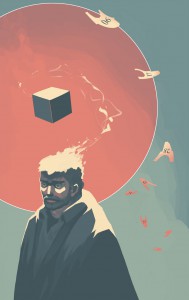An essay by Harry Campbell, as provided by Domenic diCiacca
Art by Ariel Alian Wilson
I knocked and walked in. “Jamie!?”
“That you, Harry?” she called from the front room. “In here! Grab a beer, bring me one.”
She was drying her hands when I joined her. She’d been fussing with her aquarium, the big one, cleaning the filters or adjusting the flow. I handed her a beer. “Aw, not the mutant guppies again! I didn’t understand the first time you explained them!”
“No, this time I’ve got something even better.”
Jamie likes to bring her work home. I shooed a kitten from a chair and slouched down on it–the chair, not the kitten. The kitten climbed my leg and claimed my lap, giving me a surly look with eyes so young they were still blue. The tiny thing settled down and began to purr. Cutest thing you can imagine, with white paws and black tipped ears and dust bunny grey hair. Its neck looked damp, so I scritched its back. “This another of your projects? Been cutting into poor defenseless kittens?”
Jamie did not rise to the bait. “I splice genes. I sculpt DNA. My work is sub-cellular,” she said in an even tone. “I haven’t used a scalpel on living tissue since I was an intern. But I have a scalpel, so keep talking.”
I grinned. I love visiting Jamie. She’s like a mental smorgasbord, I always leave stuffed full of ideas. One of her grad students once described her as an “approaching storm.” I think he meant it as a compliment.
Jamie sat in a chair across from me and leaned forward to stare intently into my face. “We’re rats in a cage. There’s too many of us. We’ve got to get out of the nest and fly before we destroy ourselves. We need a Diaspora, colonies, seeds on the wind. Trapped in the nest like this, we’re not in danger of extinction in a thousand years–” She tapped my knee to emphasize the point. “–we’re in danger now.”
“You’re mixing your metaphors. Or you’re designing flying rats.”
“Don’t laugh. Someday we’ll be designing people to live in space.”
“Akk! That is disgusting!”
“What?”
“Just picturing what a human adapted for space might look like. Eeww!”
She laughed, a rich and lovely sound. “Yes, by the time we’re able to live safely in deep space, selfolution will have changed us considerably.”
“Wait. Evolution?”
“Selfolution. Or S. D. Evo. Self-directed evolution. If we can’t change the environment, then we will have to adapt to the environment. Fill an ecological niche, or a planet’s worth of niches, by choice. It’s evolution’s next step. The inevitable next step. Someday women will have babies tailor-made for Mars. Which reminds me. I want to show you something.” She took the kitten over to the aquarium and dropped it in.
“Hey!” I jumped up, headed to the rescue. But the kitten sank calmly to the bottom, pushed lightly off and began chasing guppies. My chin must have bounced off my boots. “It’s breathing under water!”
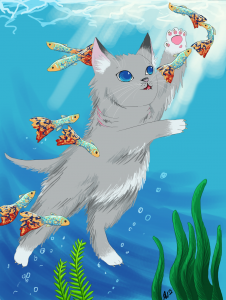
She took the kitten over to the aquarium and dropped it in.
“Hey!” I jumped up, headed to the rescue. But the kitten sank calmly to the bottom, pushed lightly off and began chasing guppies. My chin must have bounced off my boots. “It’s breathing under water!”
To read the rest of this story, check out the Mad Scientist Journal: Autumn 2015 collection.
Harry Campbell was born somewhere just south of James Bay in Ontario, Canada. He is a construction engineer who considers a bridge (any bridge) to be the epitome of functional design. He collects guitars and teapots as exemplary examples of form following function. He pumps iron for sanity’s sake and never expected to get married.
Domenic diCiacca was born in Edinburg, Scotland, once lived in a mining town in Ontario, Canada, and now lives on forty acres in Missouri with a dozen horses, a red head, and too many damn cats. His hobby is making his wife laugh.
Ariel Alian Wilson is a few things: artist, writer, gamer, and role-player. Having dabbled in a few different art mediums, Ariel has been drawing since she was small, having always held a passion for it. She’s always juggling numerous projects. Currently lives in Seattle with her two cats, Zippy and Persephone. You can find doodles, sketches, and more at her blog www.winndycakesart.tumblr.com.
